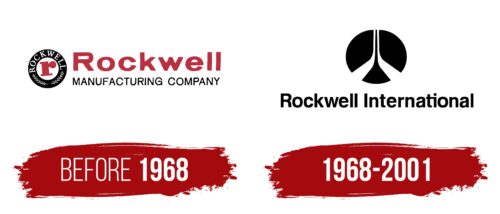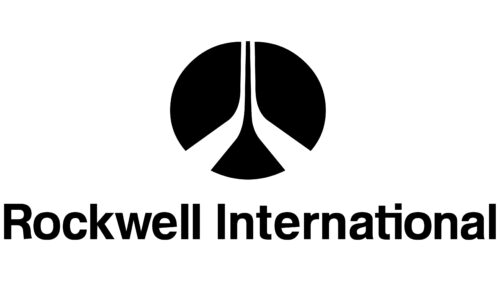 Rockwell International Logo PNG
Rockwell International Logo PNG
The Rockwell International logo is a powerful symbol embodying strength, reliability, and innovation. Its strict geometric shape and concise lines emphasize the brand’s stability. It also reflects the high-tech developments and engineering solutions that underpin the company’s operations.
Rockwell International: Brand overview
Rockwell International, an influential American manufacturer, has profoundly impacted various industries, revolutionizing aerospace and defense, automotive, electronics, avionics, and industrial products.
Rockwell International’s history began in 1919, when Willard Rockwell founded Rockwell Manufacturing Company, initially specializing in automotive axles and components.
Rockwell International made significant strides in the mid-twentieth century, expanding into many industries. In the 1930s, the company entered the aviation industry, supplying parts to airplane manufacturers.
After the war, Rockwell International reached new heights in aviation. The company played a significant role in developing iconic airplanes such as the Boeing 707. It participated in developing the North American Aviation Sabreliner business jet, which led to significant success in the commercial airliner market.
The company played a key role in the Apollo program, designing, manufacturing, and assembling the Apollo Command and Service Module, which enabled humans to reach the moon. This remarkable achievement is a source of great pride.
Building on the success of the Apollo program, Rockwell International was awarded a contract to manufacture the Space Shuttle Orbiter. The company’s facilities in Downey and Palmdale, California, became the epicenter for assembly, integration, and testing of the Space Shuttle Orbiter, a defining moment for Rockwell International and the space program.
Rockwell International’s impressive portfolio of defense products demonstrates its expertise in advanced military technologies. From the F-15 Eagle to the B-1B Lancer to the OV-10 Bronco, the company has produced in-demand aircraft and delivered sophisticated surveillance and weapon systems for military operations.
In the late 1990s, Rockwell International decided to focus on its core businesses, which led to restructuring and the spin-off of other divisions. In 2001, the conglomerate split into Rockwell Automation and Rockwell Collins, specializing in industrial automation and recognized for aviation communications and electronics solutions.
Meaning and History
What is Rockwell International?
Rockwell International is a large manufacturing conglomerate with a diversified product portfolio that includes aviation, aerospace and defense, commercial electronics, automotive components, printing presses, avionics, and industrial products. This company has grown into an industrial giant, initially focusing on industrial valves, German two-stroke engines, power tools, and gas and water meters within seven operating divisions.
Before 1968
Rockwell International had a predecessor, the Rockwell Manufacturing Company. It produced power tools and was not yet associated with the aerospace industry, so its logo had a neutral design. The emblem of that time featured a lowercase red “r” placed inside a black ring with the white inscription “ROCKWELL.” The elegant serif font balanced the rounded forms’ softness. This composition showcased the brand’s greatness and desire to stand out among competitors.
The mini-seal was adorned with a laurel leaf pattern, symbolizing success, victory, and triumph. This indicated the company’s great prospects, commitment to quality, and innovation. Additionally, the laurel wreath represented the firm’s upcoming achievements, reflecting its aspirations for the near future. The primary business strategy was acquiring other companies, from avionics suppliers to typewriter manufacturers.
On the right was the ambitious brand’s name. Unlike the first part of the logo, it was written in two types of sans-serif geometric fonts: thin and bold. This visual contrast-enhanced the company’s recognition, visually balanced the text, and added dynamism.
The red word “ROCKWELL” stood like a pedestal, signifying the power tool manufacturer’s leading position. The words “MANUFACTURING COMPANY” were in compact black letters, making the emblem attractive and easy to read.
1968 – 2001
Though Rockwell International is no longer operating, its emblem remains a celebrated example of futuristic design. The emblem features two curved white stripes intersecting within a black circle, creating the visual effect of a road extending towards the horizon. This symbolizes progress and a forward trajectory, reflecting the company’s commitment to innovation.
The curved lines sharply ascend, representing a drive for growth and development. This upward movement aligns with the company’s historical focus on aerospace, symbolizing flight and ambition in technology and engineering. The emblem encapsulates Rockwell International’s progressive spirit.
The black circle represents the globe, indicating the company’s global reach across various industries. The white stripes crossing the circle highlight the company’s leadership in technological advancements and its impact on the future.
Below the emblem, “Rockwell International” is displayed in bold, clear text, reflecting the company’s strength and reliability. Combining graphic elements and text creates a balanced logo that communicates the brand’s identity.
The contrast between the white stripes and the black circle creates a striking visual impact, symbolizing clarity and focus. This color scheme enhances the emblem’s modern and innovative feel.
The design elements work together to create a sense of movement and dynamism. The road-like stripes suggest a journey filled with potential, while the upward curve indicates an ambitious outlook. These elements reflect Rockwell International’s commitment to pushing boundaries in technology and innovation.





